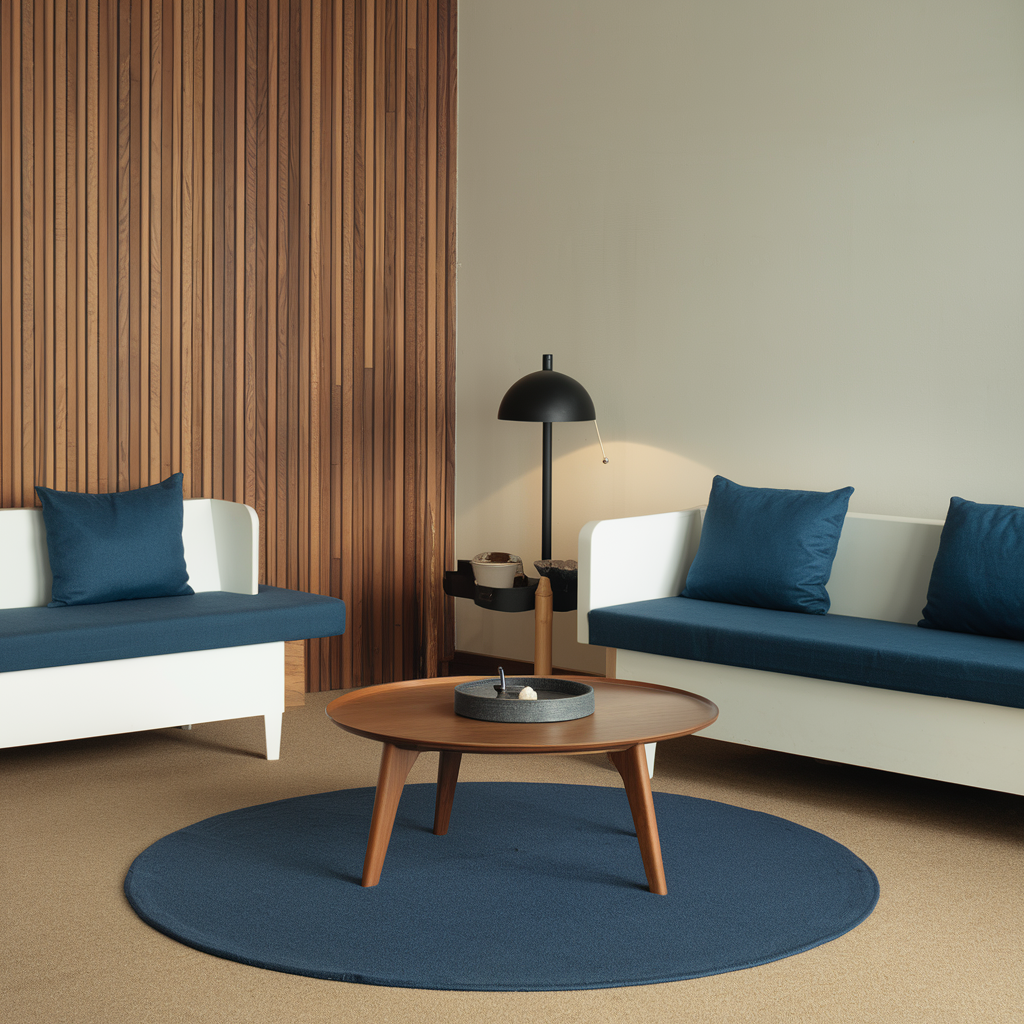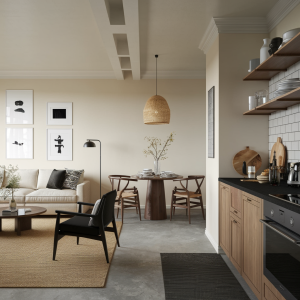
The Role of Color in Interior Design: How to Set the Right Mood
Find out how the right choice of color in interior design can dramatically alter your room’s mood in our enlightening guide.
Have you ever noticed the unspoken language of your living space? It’s not just color, but the hues on your walls serve as ‘emotional narrators’. While reds and yellows can create enthusiasm, the more serene blues and greens could be soothing you. Proper selection of the color palette plays a vital role in setting the ‘right mood’ for each room. How will you find that perfect hue? Stay tuned while we solve this vibrant riddle together.
Everything You Need to Know About Color Psychology Fundamentals
Dive into the dynamic field of color psychology, wherein each color possesses a particular effect on your emotions and actions. That’s right, this isn’t mere wall paint, but rather one of the key elements to create an ambiance in the area.
Now consider, you’re not choosing random colors just because they pop. You are steadfastly making a decision because colors are powerful enough to affect how you feel in your home. As for colors such as red and yellow, they can energize, calm blue, while yellow has the power to uplift. It is not alongside magic; it is science.
But recall, it’s not just the color in itself, but the What do you call it again? The intensity of the color – can affect how someone feels. Intense, darker colors tend to evoke certain emotions intensely, while lighter tones can be calming.
The Emotional Impact of Different Colors
Following what you’ve looked into with color psychology, we will take a look at the emotional impact most colors have.
For example, red means and incites passion and energy, so it is a great color to use in activity areas.
Blue yields a sense of calm and peace, which is perfect for relaxing zones or bedrooms.
Yellows are cheerful and warm, while green symbolizes nature so wonderous and tranquil which is amazing for the spaces we want to feel refreshed.
Purples can mean and evoke luxury while also conveying creativity making it perfect for personal spaces or artistic spaces.
Finally, the balance adding neutrals such like white, gray, and beige – are the complements of strong colors as they allow the colors to shine without overemphasizing them.
Practical Tips for Choosing the Right Colors for Your Rooms
Choosing the best colors for your rooms doesn’t need to be complex. Begin by deciding on the mood you would like to create.
Bright colors such as red and orange are excellent for a workout area or home office because they motivate and stimulate. Softer colors like green or blue foster relaxation and peace making them perfect for bathrooms and bedrooms.
Stand out with a vibrant red or orange paint color on the wall of your home office, and later calm your bedroom with tranquil green and blue shades.
Don’t forget to consider filling the rest of the space with furniture in neutral colors. They can emphasize other elements in the room instead of drawing unnecessary attention.
Let your mind stretch and combine colors. You can adjust how your painted space looks or feels if you need to.
Trust your gut on where to take the space and know its truly one of a kind for you once completed.
Case Studies: Successful Use of Color in Interior Design
You might think that the use of color interior design is successful only for personal taste purposes, but these several case studies reveal it is more of hours of research regarding color science and psychology to crack the code.
For example, one restaurant New York boldly painted their dining area with red hues as they are known to stimulate appetite, and to their joy it led to increased food orders.
In a tech startup’s contrasting case, they decided to paint their workspace blue and green as those colors are known to promote productivity and creativity.
Even a children’s hospital deployed pastel colors to create a more calming environment to reduce patient stress.
These realizations indicate that understanding color psychology is not only useful but necessary for accomplishing your design objectives.
People are not exaggerating when they say that the color of your space can make or break it.
The Future of Color Trends in Interior Design
As much as some people might think that color trends in interior design are still trends, they are likely to be much more significant than you think. By merely color alone, you can set the mood of a room, create a story, or form a strong established aesthetic identity.
One significant shift we expect to see in the future is the movement towards more natural, earthy tones. This is a reflection of our growing environmental awareness. Pastels for sure will gain even more popularity thanks to their ability to create a calming, serene atmosphere.
Don’t forget, however, that bold, vibrant hues will still have a significant impact when creating statement spaces.
Conclusion
Now you know, the next time you are revamping a room, consider the impact color can have. Also, don’t forget to think about emotions! If you are trying to achieve a goal for a tranquil home office, then go for the cooler blues and greens. Color has the power to shift your surroundings and the way a chaotic living room was changed into a serene oasis by using cool-colored tones is astonishing. Take the plunge and sculpt your ideal vibe!
